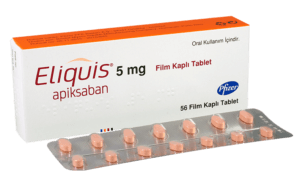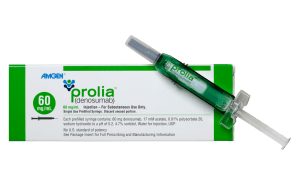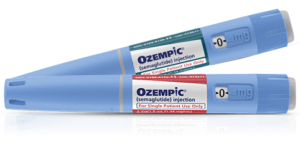A few months ago, a friend came to me for some advice. He knows I am a health writer and researcher. He called me quite panicked after a consultation with his specialist physician. Putting it mildly, he was frightened by the words he had heard, almost to the point of not being able to listen to or process any of the information the doctor had shared after hearing the first few chilling words. He had been diagnosed with prostate cancer – two words that sounded like a death sentence. In response to his request for information, I did a lot of research, and I’m happy to share some of what I could tell him.
What I discovered during my research was reassuring to my friend and allowed plenty of reason for optimism. Of course, I’m not offering this information as a medical professional. I strongly encourage anyone with even the smallest concern that they may be living with this serious condition to consult a qualified healthcare provider with specialist knowledge in these areas.
The words “prostate cancer” do indeed sound terribly ominous, so I want to start by explaining a little bit about what they mean in simple terms.
The prostate is a small, walnut-sized gland found only in men. It is located below the bladder and in front of the rectum. It surrounds part of the urethra, the tube through which urine and semen exit the body. The prostate’s primary function is to produce a fluid that, together with sperm cells from the testes and fluids from other glands, makes up semen. This prostatic fluid nourishes and protects sperm during ejaculation. It also plays a role in hormone metabolism and helps regulate urine flow.
Changes in the prostate are fairly common, and the great majority of them are not serious and require little or no intervention. As men age, they become more likely to experience physical changes. By the age of 70, most men will have at least one change that could be a sign of a more serious health issue. However, in many cases, these changes are simply normal signs of aging.
Enlargement of the prostate is extremely common as men age. Most often, it is due to the condition known as Benign Prostatic Hyperplasia (BPH), which is a non-cancerous enlargement of the prostate gland. The main signs are difficulty starting urination, a weak urine stream, and an inability to empty the bladder completely which ends up as the need to urinate frequently.
There are two main treatment options. Medications containing 5-alpha reductase inhibitors, such as Avodart, Proscar , and Propecia are specifically designed to treat BPH. Alpha-blockers, like Hytrin and Cardura, treat a wider range of conditions besides BPH and may be less effective than the other choices. If neither of these work well enough, there is the option of minimally invasive surgery called transurethral resection of the prostate (TURP), in which a portion of the prostate is cut away and withdrawn through the urethra.
The significant term in the name of the condition is benign prostatic hyperplasia. This means that it is not cancerous.
Cancer used to be a word that was so frightening that adults used a secret code (the “Big C”) if ever they had to talk about it in front of children or sick people for fear of having to explain what it meant and terrify them. Thanks mainly to the tremendous strides that have been made in treatments for a wide range of cancers, the word alone is no longer taken to be a death sentence. Cancer in the prostate is fairly common, and the symptoms closely mimic those of BPH, coming from the steady but slow growth in the size of the gland. In many cases, BHP can turn into cancerous growth, and this is, in fact, what happened to my friend.
Enlargement of the Prostate Cancer by Stages
Usually, prostate cancer is classified into one of four stages based on the level of growth.
- Stage I characteristics are confinement of the cancer to a small area of the prostate. Stage I is usually asymptomatic. The tumor cannot be felt during a digital rectal exam or seen with imaging. If it is detected, that mostly would have been owing to surgery for another condition or the discovery of high PSA levels (prostate-specific antigen) in a laboratory test.
- Stage II characteristics are essentially the same as Stage I but may involve more of the gland. A tumor may be palpable during a digital rectal exam or was seen with imaging but will not yet have spread outside the prostate. There are still likely to be few if any, symptoms.
Stage II has been divided into three subcategories:
- Stage IIA involves one-half or less of one side of the gland.
- Stage IIB involves more than one-half of one side but not both sides.
- Stage IIC involves both sides of the gland.
Stage II is usually still without direct symptoms, but some men may experience urinary issues.
- Stage III is when the cancer has become more aggressive and begun to metastasize, spreading beyond the prostate to nearby tissues. The cells may invade the glands that help produce semen (the seminal vesicles).
Stage II has also been divided into three subcategories:
- Stage IIIA is when the cells have spread to the surrounding tissue but not to the seminal vesicles.
- Stage IIIB is when the cancer has spread to one or both seminal vesicles or other nearby tissues.
- Stage IIIC is any level of growth with an elevated prostate-specific antigen (PSA) level above 20 where a tumor is visible in PET scans.
Symptoms remain typical of an enlarged prostate, such as difficulty urinating and a weak stream, but now there may be blood in urine or semen and pelvic pain.
- Stage IV is fully metastatic castration-resistant prostate cancer (MCRCP), in which the prostate cancer has spread to other parts of the body, such as bones, lymph nodes, liver, or lungs.
Symptoms typical of metastatic prostate cancer include bone pain, swelling in the lower legs, fatigue, weight loss, all of the BPH urinary symptoms, and general discomfort.
Other medical terms are sometimes used to categorize the stages. Stage I – Stage III are grouped together as localized stage prostate cancer, and Stage IV as either metastatic prostate cancer or distant stage prostate cancer. Research has shown that the 10-year survival rate for localized-stage prostate cancer is 100%, which was highly encouraging for my friend. Even distant-stage prostate cancer has a reasonably high 5-year survival rate (currently 32% of all cases), and this has been steadily improving as better treatments are being implemented.
Treating Cancer of the Prostate
The approach to treatment after a prostate cancer diagnosis is mostly dependent on the stage, although the age of the man may cause some extra medicines to be recommended. The most significant difference coming from age is whether sexual activity is an important factor for the patient. Prostate enlargement may disrupt a man’s sexual activity by leading to erectile dysfunction. Younger men may want to pay special attention to maintaining an active and satisfactory sex life and youthful appearance, whereas, for older men, this may take a back seat to other considerations.
In general terms, the most frequently recommended prostate cancer treatments, stage by stage, are:
- Stage I: Regular monitoring, with the possibility of radiation therapy or surgery if there are signs of aggressive growth. Surgery may be an option if there are serious difficulties in urination or blood in the urine. It’s usually a radical prostatectomy that removes the prostate itself, the seminal vesicles, and other nearby tissue. It may be the best option while the cancer is localized to the prostate.
- Stage II: The therapy involves the same basic elements as in Stage I, with more frequent visits to the doctor and regular prostate-specific antigen (PSA) tests.
- Stage III: Invasion of the seminal vesicles can have a more pronounced effect on sexual performance. Consideration may also be given to chemotherapy in order to slow down the spread of the cancer into nearby tissues. Drugs such as Zytiga, and Erleada are a new form of targeted medications known as androgen deprivation therapy (ADT).
- Stage IV: External beam radiation therapy (EBRT) is a form of high-energy X-rays to kill cancer cells and shrink tumors. Radiation therapy can also help relieve bone pain and other symptoms. Further use of the chemotherapy choices for Stage III is also an option.
Treatments for prostate cancer include hormone therapy, chemotherapy, targeted therapy, and symptom management. There are not many options for surgical treatment because once the prostate cancer cells have started to spread, this would involve too many interventions, and there’s little chance that all locations can be excised.
Targeted therapy, like radiation treatment, is usually chosen when the location of metastasized growths can be detected, such as when the cancer spreads to the bones. However, the prolonged use of these therapies is restricted due to the possibility of adverse side effects.
Hormone therapy is usually targeted at boosting the levels of the male hormone testosterone, which can be strongly diminished as the cancer spreads.
















